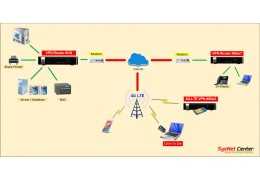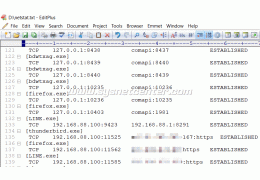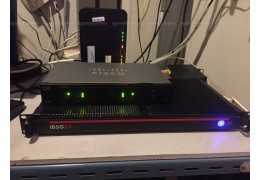คู่มือการใช้กล้อง TP-Link VIGI ดูผ่าน Cloud แบบไม่มี NVR บันทึกลง Memory Card การ Config


คู่มือการใช้กล้อง TP-Link VIGI ดูผ่าน Cloud แบบไม่มี NVR บันทึกลง Memory Card การ Config








Huawei eKit AP371 Wireless Access Point 802.11be Dual-Radio 3.57Gbps, Smart antenna, Port LAN 2.5GE, Managed ผ่าน Cloud/Standalone
สอบถามข้อมูลสินค้าเพิ่มเติม
LINE ID: @sysnet โทร: 02 102 4284
Click ต้องการใบเสนอราคา
Huawei eKitEngine AP371 Access Point Datasheet
Settled AP | Wi-Fi 7 | 3.57 Gbps device rate | Dual-radio | 150 access users recommended | Max. 256 access users | 23 dBm transmit power | Smart antenna | 18 m optimal coverage range
AP371 Huawei eKit Product Specification | |
Product Overview | Huawei eKit AP371 Wireless Access Point 802.11be Dual-Radio 3.57Gbps, Smart antenna, Port LAN 2.5GE รองรับการ Managed ผ่าน Cloud/Standalone |
Technical specifications | |
Installation Type | Wall,Ceiling,T-Rail |
Dimensions (Diameter x Height) | 180 mm x 35 mm (7.09 in. x 1.38 in.) |
Weight | 0.47 kg |
LED indicator | Indicates the power-on, startup, running, alarm, and fault states of the system. |
Maximum power consumption [W] | 13.60W |
Power supply mode | DC adapter,PoE |
Rated input voltage [V] | 12 V |
Input voltage range [V] | DC: 12 V ± 10% PoE: 802.3af/at |
Service port surge protection [kV] | PoE port: Common mode (8 wires to ground): 4 kV (1.2/50 us, 42 ohms), criterion C |
Physical ports on the entire device | 1 x 100M/1GE/2.5GE electrical port |
Operating temperature | -10°C to +50°C |
Storage temperature | -40°C to +70°C |
Radio specifications | |
Radio number | 2 |
Operating frequency band | 2.4GHz,5GHz |
MIMO spatial streams | Radio 0 (2.4 GHz): 2x2 |
Wi-Fi standard | 2.4 GHz: 802.11b/g/n/ax/be |
Antenna type | Built-in smart antennas |
Antenna gain | 2.4 GHz: 4 dBi |
Maximum transmit power | 2.4 GHz: 20 dBm/chain 23 dBm (combined power) |
Maximum number of SSIDs for each radio | 6 |
Maximum number of users | ≤ 128 |
Cloud-based management mode | |
WLAN features | Compliance with IEEE 802.11be and compatibility with IEEE 802.11a/b/g/n/ac/ax |
Network features | Compliance with IEEE 802.3ab |
QoS features | Priority mapping and scheduling that are compliant with WMM to implement priority-based data processing and forwarding |
Security features | Open system authentication |
Maintenance features | Unified management and maintenance on the Cloud management platform |
รับประกัน | 3 ปี |
ยังไม่มีการ review กรุณาเขียน review
ไม่มีคำถามที่ใช้ได้ ถามคำถามของคุณ
 งานติดตั้ง WIFI Hotspot โรงแรมเมโทร
งานติดตั้ง WIFI Hotspot โรงแรมเมโทร Review Ruijie RAP62 Wifi-6 พร้อม Ruijie Cloud ราคาประหยัด Feature ครบ
Review Ruijie RAP62 Wifi-6 พร้อม Ruijie Cloud ราคาประหยัด Feature ครบ

Huawei eKit AP371 Wireless Access Point 802.11be Dual-Radio 3.57Gbps, Smart antenna, Port LAN 2.5GE, Managed ผ่าน Cloud/Standalone
check_circle
check_circle